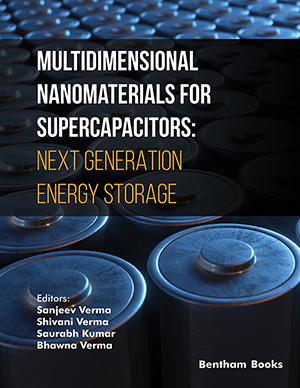Abstract
Over the past few years, supercapacitors have been spotlighted because of
the challenges faced by other energy storage systems. The supercapacitor possesses
excellent power density and long-term durability with an eco-friendly nature. Due to
their wide range of advantages, supercapacitors are applicable especially in electric
vehicles, heavy-duty vehicles, telecommunication, electric aircraft, and consumer
electronic products. As per the charge storage mechanism, supercapacitors are divided
into three categories based on their charge-storing method: electric double-layer
capacitors (EDLCs), pseudocapacitors, and hybrid capacitors. The electrode materials
such as graphene, activated carbon, metal oxides, conducting polymers, etc., were
widely applied, for better performance. The electrolyte is a crucial component in the
mechanism of the supercapacitor to run the system at a higher voltage and thus there
are various electrolytes such as solid, inorganic, and organic based on the application of
the materials, and the electrolytes are chosen. However, the supercapacitors suffer from
low energy density. Currently, research is more focused on advanced materials and
various synthesis methods to overcome the drawbacks. This chapter provides a detailed
understanding of supercapacitors with redox and non-redox reactions -the broad
classification of the supercapacitor -their charge storage mechanism -various electrode
materials -electrolytes (aqueous, non-aqueous, and solid) and current collectors, etc.
Finally, the parameters that help in estimating the performance of supercapacitors are
(specific capacitance, energy density, and power density) included.
Keywords: Classification of supercapacitor, EDLC, Hybrid supercapacitor, Pseudo capacitors.


















